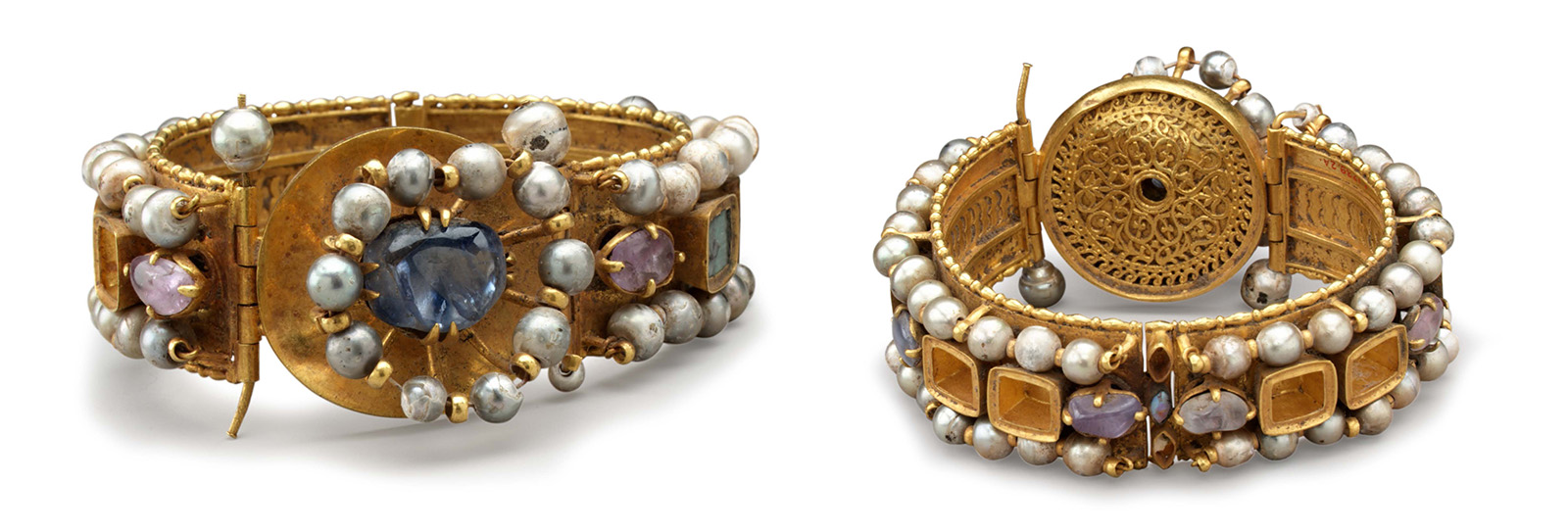
History in Objects: Jeweled Bracelet, an Emblem of an Empire
- Arts
- History
2
Written by Suzanne Garofalo
A lightning bolt pierces an oyster’s shell, leaving behind a luminous orb called a pearl. It is a source of light, and to possess a cluster of them is to be special—a luminary, even. Believing this to be true, the Byzantines used pearls in many artistic objects. In jewelry pearls conveyed wealth and status.
Although much remains unknown about this centuries-old pearl- and gem-encrusted bracelet before an Egyptian dealer sold it to J. P. Morgan in the 1910s, it hints at quite a lot about the vast Byzantine Empire from which it sprang.
The intricate design, particularly on the bezel’s reverse, suggests the work of a highly skilled goldsmith, who would have plied his trade in one of Byzantium’s urban jewelry centers: perhaps Alexandria, Egypt, or the imperial workshops of the capital, Constantinople, which served as a crossroads of commerce and culture. Hewing to the Roman esthetics of late antiquity—and the decree that gems remain exclusively for the emperor’s use or bestowal upon a worthy subject, such as a diplomat—the artisan likely created the showy bangle to adorn the wrist of a noblewoman. She would have worn it as one of a pair, the style of the day.
Because the bracelet survived in remarkable condition, the seller probably told Morgan the truth: It was hidden away for ages before being discovered as part of a hoard in Upper Egypt. Whatever its story, the bracelet, with its distinct materials, symbolizes the disparate narratives of the Byzantine Empire.
Special thanks to Michelle Al Ferzly, research associate at The Met.
You may also be interested in...

2025 Calendar - Textiles from the Islamic World
Arts
A simple strand of cotton or wool becomes a woven treasure by the hands of a textile artist. This calendar shares 12 months of forms, designs and shapes that reflect the artists' interest and culture.
A Fasting Journey Through Ramadan
Arts
What’s it like as a non-Muslim to fast during Ramadan? Writer Scott Baldauf shares his journey through the holy month where he uncovers resilience, empathy and the powerful unity found in shared traditions.
Covering 75 Years of Arts & Culture
Arts
Sharing connections in the arts and cultural heritage is reflected in AramcoWorld's cover stories about architecture, visual arts, photography, music, literature and more.